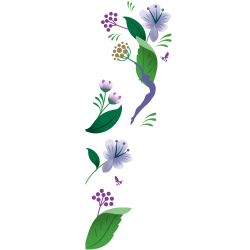

The best exercises for your dosha
The benefits of regular exercise are well known; it can help reduce the onset of major degenerative conditions such as heart disease and diabetes whilst also improving mental health and reducing the risk of suffering from anxiety and depression. However, not everybody is suited to sweating it out in the gym or running a marathon.
In fact, undertaking exercise that is not suited to your body type doesn’t always benefit us and can leave us feeling exhausted and or run the risk of injury. Understanding your Ayurvedic body-mind type, or dosha can really help you to determine what type and intensity of exercise will be of most benefit for you and will actually leave you feeling good.
In Ayurveda, there are three different body types or constitutions known as doshas: Kapha, Pitta and Vata which can be defined by particular patterns of behaviour and physical characteristics. If you don't know what your dosha is, take our dosha quiz to find out.
Here is a little insight into what types of exercise are most suited to each dosha:
Vata types often have thin and delicate body frames and benefit from strengthening and balancing exercises such as yoga or brisk walking.
Pitta types are the natural athletes and are often found challenging themselves and pushing themselves to the limit. But they can get bored easily, and so benefit from the fun and creative exercise.
Kapha types really benefit from getting a sweat on. They are able to sustain longer periods of metabolic activity as they have excellent stamina. They might find exercises such as swimming and trampolining fun.
Find out which are our .
As well as physical exercise, it's also important for all dosha types to consider mental exercise too. help to calm the mind and improve oxygen supply to the brain. And it's very important to take time out of our busy lifestyles to focus on our mental health.
Remember, we’re all a mixture of the three doshas so we’ll show characteristics of each but one or two will tend to dominate. If two doshas are dominant for you, you can read both articles or be guided by the seasons.
For example, Vata dosha is more likely to get aggravated when the season's change in and , and Kapha dosha is late and early . So take extra care to balance these doshas at these times of the year.


Author: Jo Webber
Head of Herbal Education
As a B.Sc. qualified Ayurvedic practitioner and yoga teacher, Jo is passionate about bringing these two ancient sciences together to help people feel empowered about their health. Jo has put her post-graduate certificate in education to good use, co-founding the Ayurveda academy to help others learn of the wonders of Ayurveda. Jo has also earned a Masters degree in human sciences from Oxford University and has taught in several schools
Qualifications:
B.Sc. qualified Ayurvedic practitioner and yoga teacher
Years of experience:
20 years as a Hatha yoga teacher/ayurvedic practitioner
Professional Registrations:
Member of the Ayurvedic Practitioners Association

